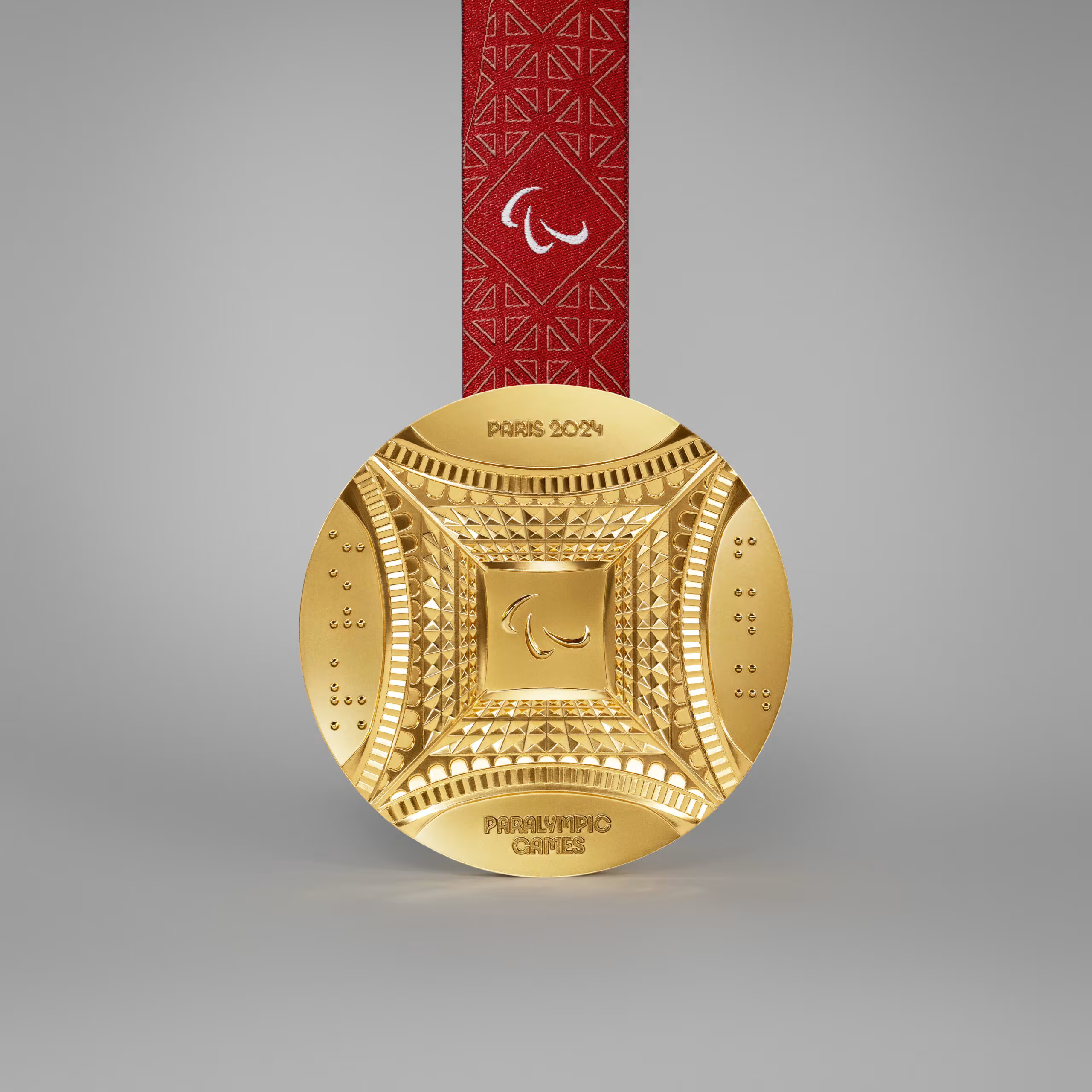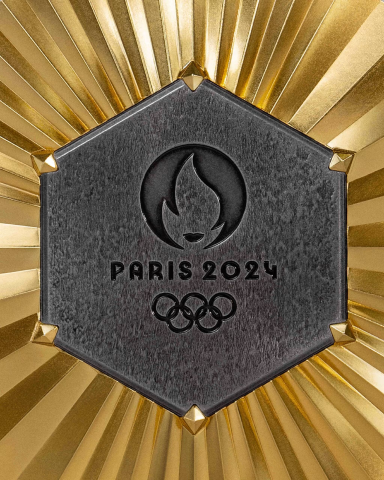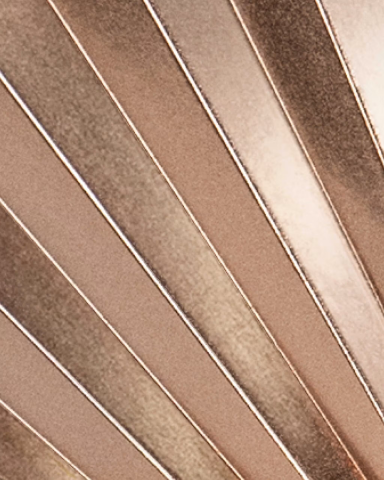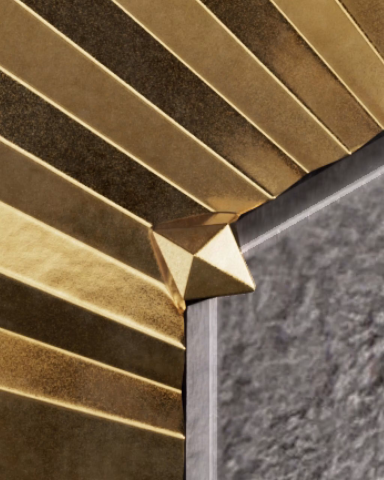To celebrate the return of the Games to France, each Games medal is embellished with an original piece of the Eiffel Tower. To create this meeting between the most prestigious object of the Games and the iconic monument of France and Paris, Paris 2024 worked on the design of the medal with Chaumet, an LVMH Group company which is a Premium Partner of Paris 2024.
A PIECE OF THE EIFFEL TOWER IN EVERY MEDAL
Winning a medal at the Games can change a life. Every athlete dreams of it, so it was only appropriate that they were involved in the design process for the medals of the Paris 2024 Games. The Paris 2024 Athletes’ Commission, chaired by Martin Fourcade, participated in the search for an idea to symbolise the identity of the next Games. The winning idea was an obvious choice: to associate the iconic monument of France and Paris—the Eiffel Tower —with the most prestigious object of the Games: the medal.
Each Olympic and Paralympic medal is set with a piece of original iron from the Eiffel Tower. Built between 1887 and 1889, the “Dame de fer” has since undergone numerous renovations. Certain metallic elements have been permanently removed and conserved in this process. For the Paris 2024 Games, the Eiffel Tower Operating Company is allowing these genuine pieces of Parisian and French history to find glory again.
DESIGNING THE MEDALS
Paris 2024 called on LVMH jeweler Chaumet to design its medals. Globally renowned for its craftsmanship, Chaumet has made the medal into a veritable jewel, with a construction conceived around three sources of inspiration: the hexagon, radiance, and gem-setting.
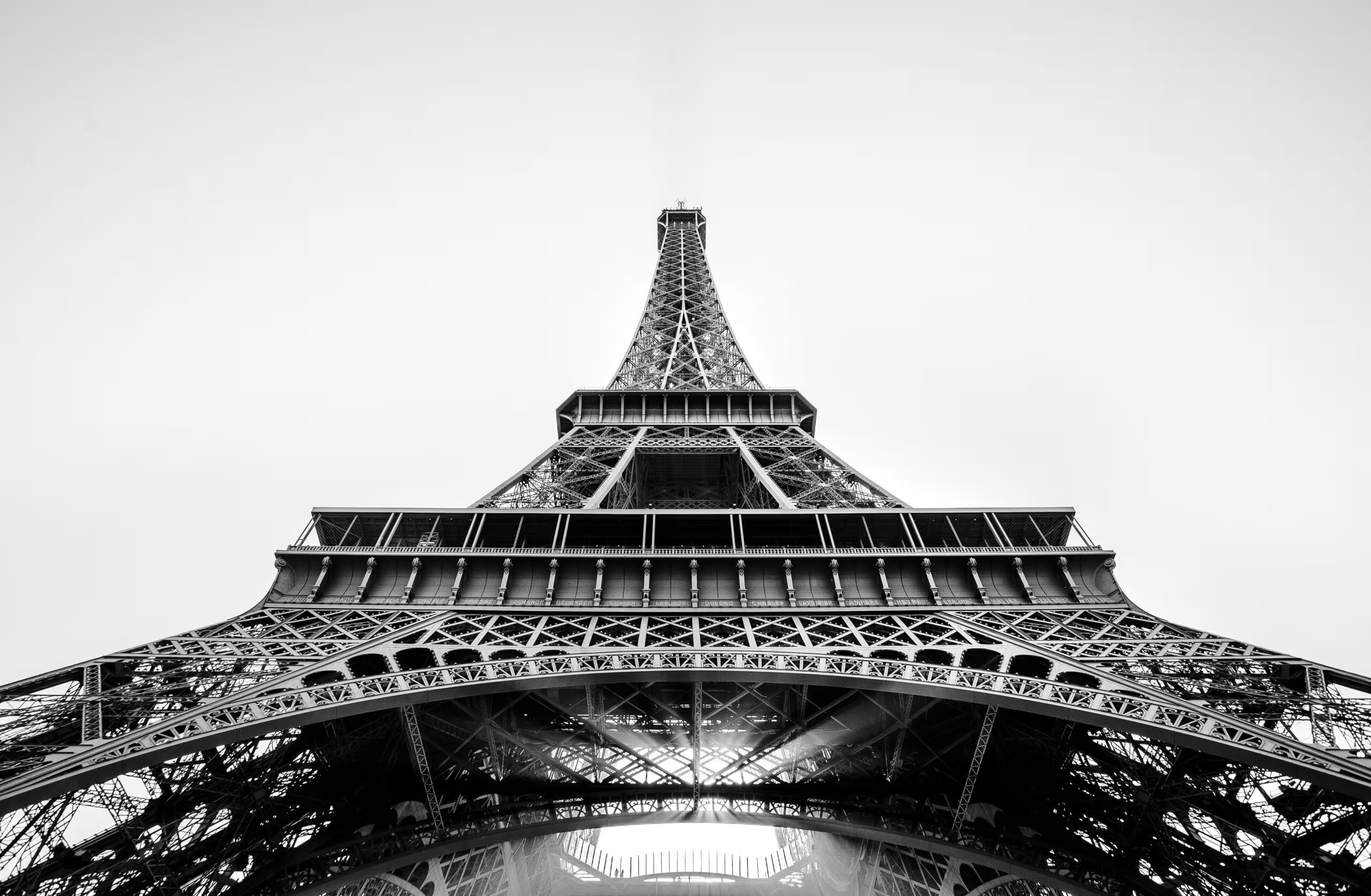
The hexagon
The original Eiffel Tower iron is formed in a hexagon — the geometrical shape of France herself. This symbol is a reminder of the whole nation’s engagement in delivering an historic Olympic and Paralympic Games. Stripped of its “Eiffel Tower brown” paint, the iron is returned to its original colour. Placed in the centreand imprinted with the emblem of the Paris 2024 Games, this piece of heritage fits perfectly within the gold, silver and bronze core of the medal.
Radiance
On the same side of the medal, fine lines project outwards at regular intervals from around the iron hexagon. Embossed rather than engraved, these lines bring relief and sparkle to a medal that is far from being smooth. This creative concept embodies both the radiance of France in the world and the shining performances of the athletes at the Games.
Setting the gem
In order to bring together the icons of the Eiffel Tower and the medal of the Games, an equally symbolic craft was required. Thanks to the creativity of LVMH and the House of Chaumet, the medal is encrusted with a piece of iron from the Eiffel Tower. Six metal appendages —one for each are used to fix the hexagon in place. This encrusting is possible due to the slightly concave shape of the medal, which adds depth to the design of each side. For Paris 2024, the distinctive “Clous de Paris” hobnail shape that resembles the famous Eiffel Tower rivets has been chosen for the setting.
LINKING THE OLYMPIC & PARALYMPIC MEDALS
Following the unveiling of a single emblem, a duo of identical mascots, a common *‘*look’ and a shared torch, Paris 2024 is continuing its ambition to bring the Olympic and Paralympic Games closer together. The Olympic and Paralympic medals thereby share one side with the same design: the side encrusted with the Eiffel Tower iron.
The Eiffel Tower has also inspired the unique design of the ribbons for the medals. For the Olympic and Paralympic Games Paris 2024, the medal ribbons will be adorned with the Eiffel Tower lattice work. The Olympic medal ribbons will be dark blue, while those of the Paralympic medals will be a deep red—a mix of the first two coats of paint (“Venice red” and “red-brown”) used on the Eiffel Tower.
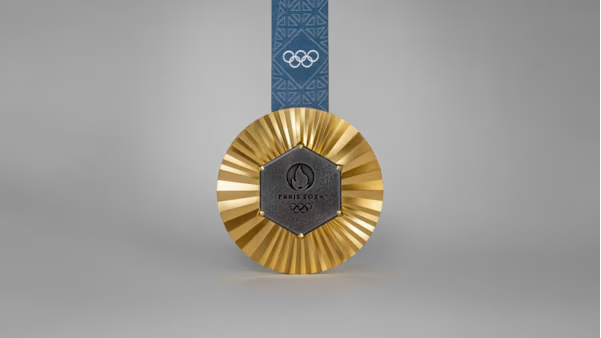
TWO UNIQUE STORIES FOR THE OTHER SIDE OF THE MEDALS
As with every edition of the Games, the other side of the Olympic medal tells the story of the rebirth of the Games in Greece, an adaptation introduced of the goddess of victory and the stadium for the Olympic Games Athens 2004 designed by Elena Votsi. A traditional feature of the medals since 2004, the goddess of victory Athena Nike is represented in the foreground, emerging from the Panathenaic Stadium that witnessed the revival of the Olympic Games in 1896. The Acropolis of Athens, another compulsory feature of the Olympic medals, is joined by the Eiffel Tower for the first time in the Paris 2024 design. In this way, the inspiration of the ancient Games in Greece, the French origins of the modern Olympic Games and their next edition in Paris are all represented.
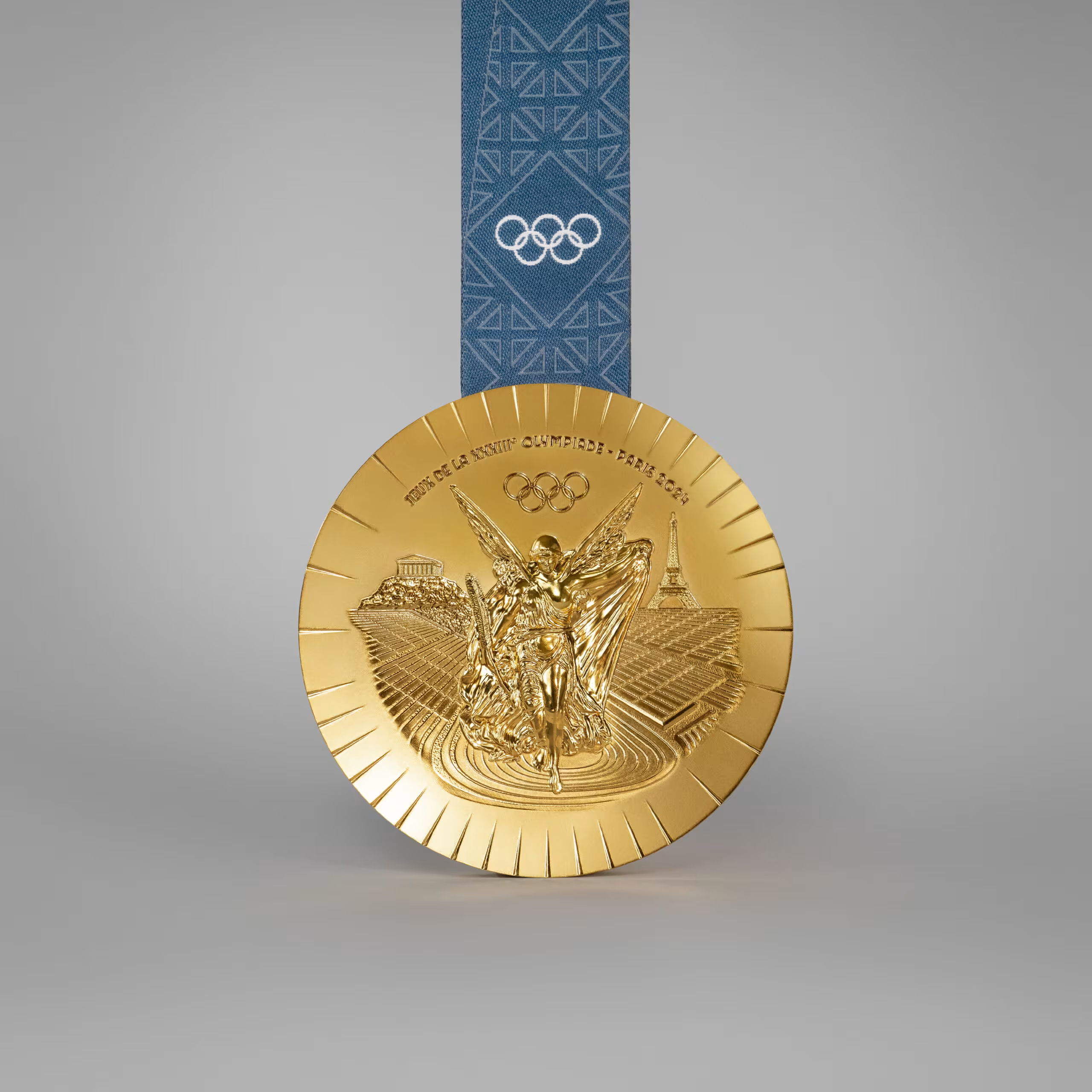
The reverse side of the Paralympic medals is a pure reflection of Paris 2024 and Chaumet’s creative choices. A graphic representation of the Eiffel Tower from an upward perspective will give medalists the chance to discover the Eiffel Tower from a rarely seen angle. The words “Paris” and “2024” surround the feet of the tower written in universal Braille, the symbolic language of accessibility and a reference to its French inventor, Louis Braille. To enable athletes with visual impairments to feel the difference between the medals, dashes are engraved on the edge: I for gold, II for silver and III for bronze.
